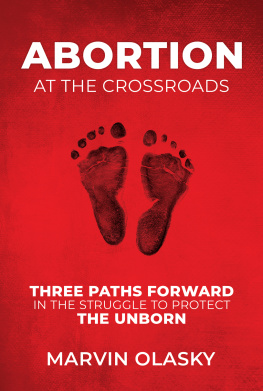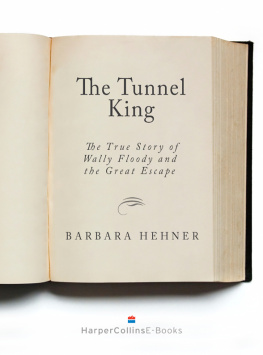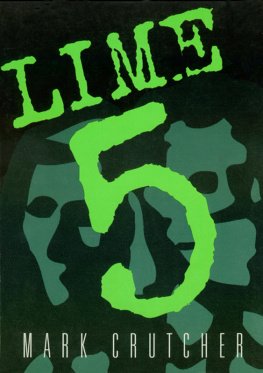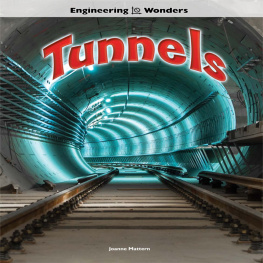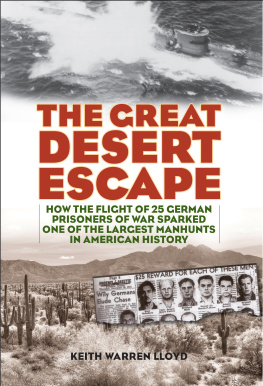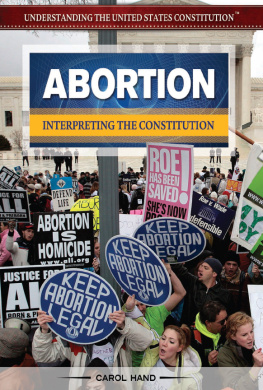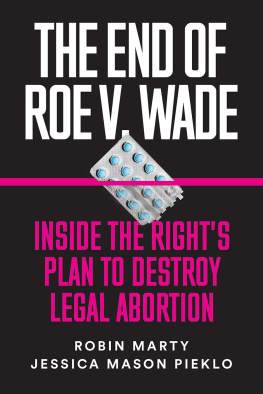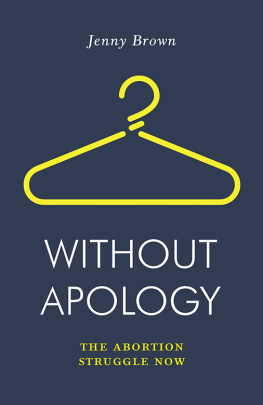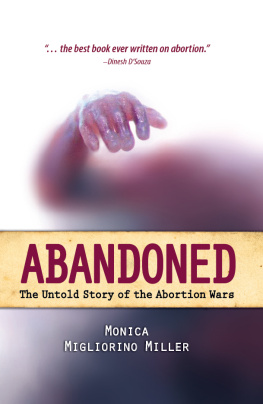For my best friend, Susan Olasky, founder of the Austin Crisis Pregnancy Center, with thankfulness for forty-five years of marriage. And for good friend and Care Net President Guy Condon, who told me his mom almost aborted him. His greatest fear was nonexistence. He noted that Planned Parenthood was expanding in big cities and increasing its abortion reach among blacks and Hispanics. He prioritized urban pro-life outposts, like one in Washington, DC. In November 2000, he spoke at that centers annual fundraising dinner and died that night, at age forty-six, when a van broadsided him as he drove home.
As I completed this book, Americans voted Donald Trump out of office, bringing Democrats back to the White House and ushering in a return of liberal policy on abortion. Abortion advocates assumed key positions in the incoming Biden Administration, and prepared to defend Planned Parenthood and Roe v. Wade.
Even before Bidens inauguration, many Democrats said they would push for taxpayer-funded abortion. The proposed appointment of California Attorney General and former Democratic Rep. Xavier Becerra to lead Health and Human Services (HHS) drew fire from Republican Senators Steve Daines and Tom Cotton, due to Becerras pro-abortion record in religious liberty cases. At the same time, pro-life activists denounced a Pittsburgh ordinance requiring a fifteen-foot buffer zone around the entrance of abortion clinics: No protests allowed.
Joe Biden himself is at a crossroads, and it is clear which direction he will take. Biden joined the Senate in Roe v. Wade year one, 1973. At the time, the Catholic senatorsaid
the ruling went too far. For a while, he was consistently pro-life. In 1982, as a member of the Senate Judiciary Committee, he voted for a pro-life constitutional amendment that the National Abortion Rights Action League called the most devastating attack yet on abortion rights. In a 2006 interview with Texas Monthly, Biden said, I do not view abortion as a choice and a right. I think its always a tragedy. I think it should be rare. We should be focusing on how to limit the number of abortions. On June 5, 2019, he still supported the Hyde Amendments prohibition on the use of federal funds for all but a few abortions. On June 6, 2020, after receiving criticism from other Democratic presidential candidates, he abruptly reversed his lifelong position on this issue.
The Supreme Court is at a crossroads. Pro-life forces cheered Trumps strong defense of religious freedom and the appointment of three conservative justices to the Supreme Court, creating a pro-life majority for the first time in decades. Abortion advocates denounced the appointment of Amy Coney Barrett in a hasty proceeding conducted during the heat of the campaign, and called it a potential death blow to Roe v. Wade. Already, cases wending their way to the Court examine recently passed laws in many states that protect unborn children only six weeks old.
Democratic Party leaders concerned by a decrease in minority support are likewise at a crossroads. A 2020 Pew survey showed only 58 percent of black and 59 percentof Hispanic Democrats support the partys abortion plank. Most blacks and Hispanics who are Republicans or Independents oppose abortion. Abortion is not the primary issue for most, but its a marker of morality: Will I vote for a person who supports killing children? Democratic leaders have to decide: Will they go with Senator Bernie Sanders, who said being pro-choice is an absolutely essential part of being a Democrat, or with Minnesota Senator Amy Klobuchar, who said pro-life Democratsare part of our party, and I think we need to build a big tent? A big tent is unlikely, but will Biden and poll-watching advisors attempt to pitch a medium-sized one?
Republican Party leaders and voters will face their own crossroads when the Supreme Court decides one of the cases that directly challenges Roe. If the Court upholds Roe, those who have issued promissory notes at no charge to themselvesLaw x or judge y will fix the problemcan no longer check a box or suck up money and energy, only to dash hopes and leave supporters disillusioned. On the other hand, if Roe goes, then real change is possible and symbolic victories will give way to trumpets and cymbals, but hard choices as well.
Whatever happens politically and judicially, pro-lifers themselves are at a significant crossroads. Many have focused on abortion centerspraying and counseling outside them, or harassing them in various ways. But the number of chemical abortions will soon surpass the number of surgical ones, and COVID-19 has speeded up the move to telemedicine and direct distribution of abortion pills, with a resultant rise in do-it-yourself abortions. Pro-lifers celebrating the closing of abortion centers may be like anti-pornography crusaders who shut down video stores, only to see much more pornography streamed directly to computers.
What all these disparate, and sometimes desperate, individuals and groups need is a sense of where weve come from. That will help us think realistically about where we should go.
***
My favorite childhood movie, The Great Escape (1963), portrays an escape by Allied prisoners of war from a German POW camp. The prisoners work on three tunnels simultaneously, calling them Tom, Dick, and Harry: when guards discover Tom, the tunnel furthest along, the prisoners intensify their alternative efforts.
From the pro-life perspective, America has been in a prison camp ever since 1973, when a Supreme Court majority overrode state laws and legalized abortion throughout the United States. Since then, the Court has killed attempts by state legislatures to tear down the prison walls and fences. Once in a while, the Court has allowed removal of a watchtower.
Pro-lifers have responded in three ways. Tunnel Tom: elect pro-life legislators, pass laws, appoint the right judges. Tunnel Dick: blockade or destroy abortion centers, expose abortionists, or (at the rare extreme) shoot them. Tunnel Harry: help women surprised by pregnancy, show them what the creatures in their wombs look like, create a culture of life.
Each of those three tunnels has had faithful diggers. This book offers a quick tour of all three. Chapters 13, Tom, tell of the legislative and judicial struggles. Chapters 46, Dick, include stories of direct action. Chapters 79, Harry, describe offerings of compassion.
My overall goal is to tell stories that show which tunnels are partly blocked, and which offer the greatest hope of saving the most lives. Prisoners in The Great Escape

